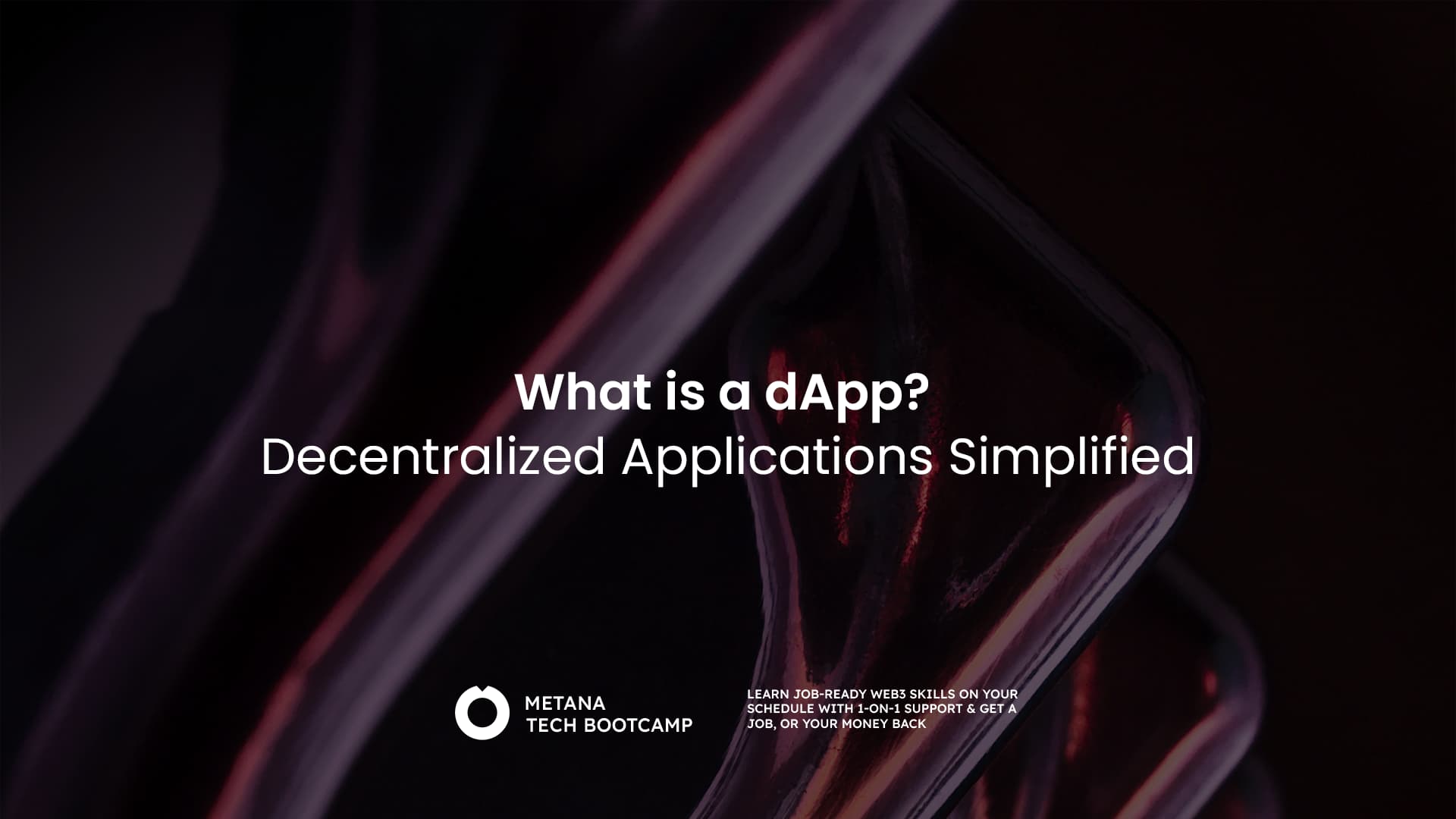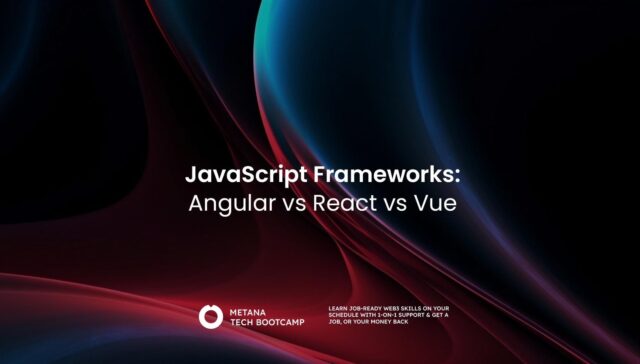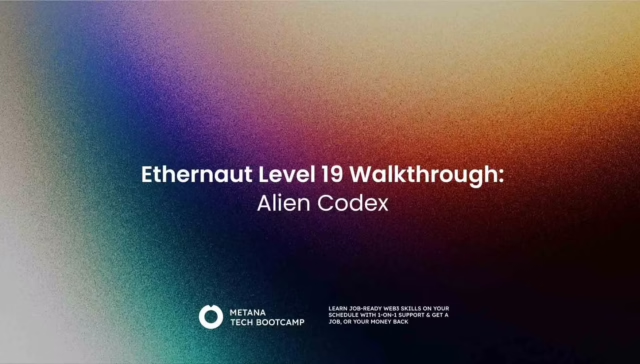We all rely on apps in our daily lives – for social media, shopping, banking, and more. But have you ever considered who controls these apps and how they operate? Traditional apps run on centralized servers, owned and managed by companies. While this offers convenience, it also raises concerns. Centralized servers can be vulnerable to outages, leading to frustrating downtime. Additionally, companies controlling the apps can potentially censor content or restrict user data access.
This is where Decentralized Applications (dApps) come in. Imagine a new generation of apps that are not controlled by a single entity, but rather operate on a distributed network. This revolutionary approach brings a wave of benefits, promising a more secure, transparent, and user-empowering way to interact with applications. Let’s explore more in to what is a dApp and how they are transforming the landscape of digital experiences.
What are dApps?
Traditional apps rely on centralized servers, like fortresses controlled by a single company. But dApps operate differently. Here’s what sets them apart:
Unlike traditional apps with their centralized servers, dApps run on a peer-to-peer network called a blockchain. Imagine a public ledger distributed across countless computers around the world. This decentralized approach eliminates a single point of failure, making dApps more resistant to outages and censorship.
Smart contracts are another key feature of dApps. These can be thought of as automated agreements written in code. They reside within the dApp and execute automatically when pre-defined conditions are met. This eliminates the need for intermediaries, ensuring trust and transparency as everyone involved plays by the same rules established in the code.
Finally, data stored on a blockchain is transparent and immutable. Imagine it as a public ledger where everyone can see the information. This transparency builds trust and fosters a secure environment. Additionally, once data is added to the blockchain, it’s virtually impossible to alter it, making it a tamper-proof record.
dApps vs. Traditional Apps

While both dApps and traditional apps serve similar purposes, their underlying structures lead to significant differences in user experience and control. Here’s a breakdown of key areas:
| Feature | Traditional Apps | dApps |
|---|---|---|
| Control | Owned and controlled by a single company | Decentralized ownership and control by network participants |
| Data Privacy | User data potentially collected and used by app owner | Users control their own data on the blockchain |
| Security | Vulnerable to centralized server attacks | Distributed ledger security, more resistant to hacks |
| Censorship Resistance | App content can be censored by authorities | Resistant to censorship, operates on a global network |
| User Interface | Generally user-friendly and intuitive interfaces | Can be complex due to the underlying blockchain technology |
Exploring the dApp Landscape
dApps aren’t confined to a single niche. They’re revolutionizing various industries with innovative applications. Here’s a glimpse into some popular dApp categories:
Decentralized Finance (DeFi): Imagine a financial system without banks! DeFi dApps, like Uniswap, empower users to lend, borrow, and trade cryptocurrencies directly. By cutting out intermediaries, DeFi offers greater control over your finances.
Gaming: dApps are shaking up the gaming world with titles like Axie Infinity. In these games, players own in-game assets like characters and items on the blockchain. This fosters a true digital economy and allows players to own their virtual goods.
Social Media: Tired of social media platforms controlling your data? dApps like Minds offer a censorship-resistant alternative. With Minds, you control your data and have a say in how the platform operates.
Marketplace: dApps are transforming online marketplaces. Platforms like OpenSea allow users to buy and sell digital collectibles and other assets in a secure, peer-to-peer manner. This eliminates the need for centralized authorities to control transactions.
This is just a taste of the diverse dApp landscape. As the technology matures, we can expect even more innovative applications to emerge, disrupting traditional industries and empowering users in the digital world.
Benefits and Drawbacks of dApps
dApps offer a compelling vision for the future, but like any new technology, they come with both advantages and disadvantages. Let’s explore both sides of the coin.
Benefits of dApps:
- Increased Security and Transparency: Data stored on a blockchain is highly secure and transparent. Distributed ledger technology makes hacking attempts significantly more challenging, fostering a more secure environment. Additionally, the transparent nature of the blockchain allows everyone to see what’s happening within a dApp, building trust and ensuring fair play.
- User Control Over Data: With traditional apps, user data is often collected and used by the app owner. dApps, on the other hand, put users in control of their data. Users can choose what information to share and how it’s used within the dApp ecosystem.
- Censorship Resistance: dApps operate on a global network, making them resistant to censorship by any single entity. This empowers users to freely express themselves without fear of content takedowns.
- Potential for Innovation in Various Industries: The decentralized nature of dApps opens doors for innovation across various industries. From DeFi revolutionizing finance to in-game economies in blockchain gaming, dApps have the potential to disrupt existing models and create entirely new ones.
Drawbacks of dApps:
- Scalability Limitations of Current Blockchain Technology: Current blockchain technology can struggle with scalability, limiting the number of transactions a dApp can process per second. This can lead to slow performance and high transaction fees, hindering user adoption.
- User Interface Challenges for Some dApps: Interacting with dApps can be more complex compared to traditional apps due to the underlying blockchain technology. This can create a barrier for new users unfamiliar with crypto wallets and blockchain concepts.
- Difficulty in Modifying dApp Code: Smart contracts, the backbone of many dApps, are self-executing code. Once deployed, modifying them can be challenging or even impossible. This raises concerns about potential bugs or exploits that could remain unaddressed.
- Potential Security Vulnerabilities in Smart Contracts: Smart contracts are complex pieces of code, and vulnerabilities can exist. If exploited, these vulnerabilities could lead to hacks or loss of user funds.
Despite these drawbacks, dApps hold immense potential. As blockchain technology continues to evolve and user interfaces become more user-friendly, we can expect dApps to play a significant role in shaping the future of technology.
Below is a summarized table of the advantages and disadvantages:
| Feature | Benefits | Drawbacks |
|---|---|---|
| Security | Increased security through distributed ledger | Potential vulnerabilities in smart contracts |
| Transparency | Transparent data on the blockchain | Can be complex for users unfamiliar with blockchain |
| User Control Over Data | Users control their own data on the blockchain | Difficulty in modifying dApp code after deployment |
| Censorship Resistance | Resistant to censorship by any single entity | Scalability limitations of current blockchain technology |
| Innovation Potential | Potential for disruption and innovation across industries | User interface complexity for some dApps |
The Future of dApps
dApps are still young, but the future is bright. Developers are tackling scalability limitations in blockchain technology, paving the way for faster, more user-friendly dApps. This will unlock their potential to transform industries.
Imagine a financial landscape powered by DeFi, offering greater control and transparency. In gaming, picture player-owned economies and truly unique digital assets. Social media could become user-centric, with dApps empowering you with control over your data and expression.
dApps hold the key to a more secure, user-driven digital world. Continued development and user adoption are crucial. As technology matures and interfaces improve, dApps have the power to disrupt the status quo and empower users globally. The future is decentralized, and dApps are leading the charge.
Understanding Blockchain: The Foundation of dApps
For those unfamiliar with blockchain technology, here’s a quick explainer. Imagine a public ledger, a shared record of information, not stored on a single server but distributed across countless computers around the world. This distributed nature makes it tamper-proof and highly secure. Transactions (like adding new data) are verified by a network of computers, eliminating the need for a central authority. This is the essence of blockchain technology, the foundation upon which dApps operate.
Dive Deeper into the World of dApps
The world of dApps is vast and ever-evolving. Here are some resources to fuel your exploration:
- Metana’s Web3 Solidity Bootcamp
- “https://www.investopedia.com/terms/d/decentralized-applications-dapps.asp“
- “https://ethereum.org/en/dapps/” (Focuses on dApps on the Ethereum blockchain)
- “https://consensys.io/academy/ondemand” (A beginner-friendly guide)
- “https://cointelegraph.com/news/how-to-build-a-dapp-on-ethereum” (For developers interested in creating dApps)
By understanding the technology and exploring these resources, you can gain a deeper understanding of the exciting potential of dApps and their role in shaping the future of technology.
FAQs:
What is a dApp?
- A dApp, or decentralized application, is software that operates on a blockchain or decentralized network, rather than a single computer.
How does a dApp work?
- dApps work by executing smart contracts on a blockchain, ensuring decentralized and transparent operations.
What are the benefits of using a dApp?
- Benefits include enhanced security, transparency, and independence from centralized control, making them resistant to censorship.
What are some examples of dApps?
- Examples include decentralized finance (DeFi) platforms like Uniswap, and games like CryptoKitties.
What is the difference between a dApp and a regular app?
- Unlike regular apps, dApps run on decentralized networks, offering more security and transparency, without reliance on a central authority.
Can anyone create a dApp?
- Yes, anyone with knowledge of blockchain technology and smart contracts can develop a dApp.
Are dApps safe to use?
- Generally, dApps are considered safe due to their decentralized nature, but users should still exercise caution and conduct research.
What programming languages are used to build dApps?
- Common languages include Solidity for Ethereum-based dApps, along with JavaScript, Python, and Rust.
How do dApps impact the financial industry?
- dApps revolutionize the financial industry by enabling decentralized finance (DeFi), offering services like lending, borrowing, and trading without intermediaries.
What is a smart contract in the context of dApps?
- A smart contract is a self-executing contract with the terms directly written into code, enabling dApps to function autonomously and transparently.




